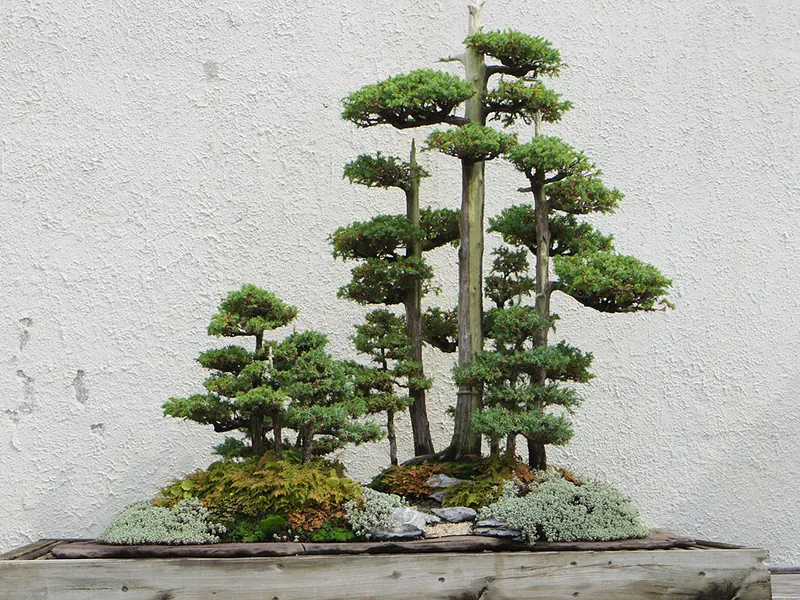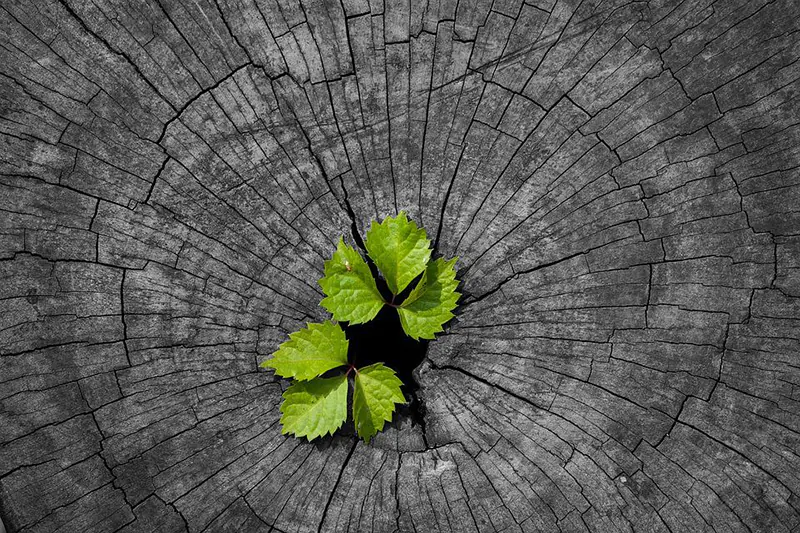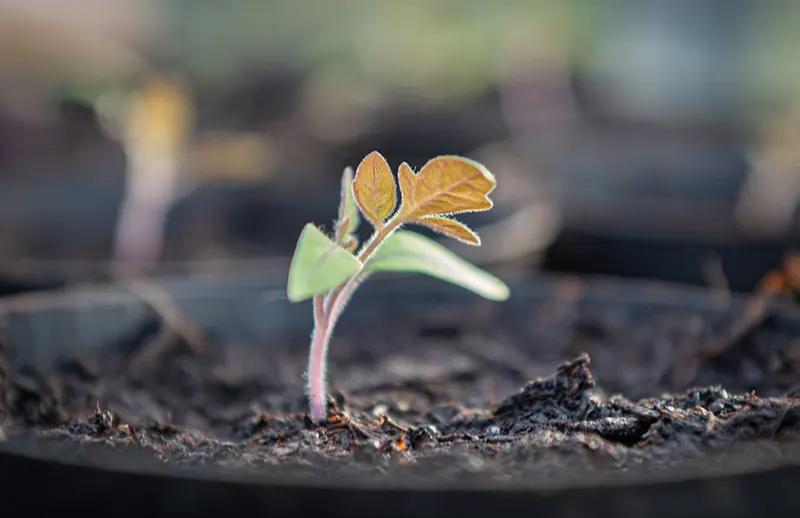How to Propagate Trees | A Bonsai Perspective
There are many ways that you can obtain a bonsai tree for your home or display. While buying one is the most common method, you can also propagate one in different ways. It’s free of charge, and you’ll be bringing a new tree into the world.
In this guide, we’ll show you how to propagate trees so you can grow your own bonsais. You’ll see various techniques used by the experts, but we’ll be sure to cover each method separately in more detail in other articles. Be sure to check our Propagation page in the Learning Center if you want to know about a specific species.

What is Propagation?
When it comes to the plant kingdom, the term propagation refers to multiplying in numbers or producing a new tree from a parent tree. There are generally two types, namely, sexual and asexual propagation. Each one has its advantages and disadvantages. The main difference is that the former combines traits of the parents while the latter is identical to the source tree.
People propagate trees for several reasons. It might be to develop new forests for the timber industry or grow more fruit for commercial purposes. For us, it has to do with cultivating new bonsais from parent trees so that we can have those species at home in our pots. It’s much cheaper than buying a bonsai, but there is no guarantee that it will work.

Methods for How to Propagate Trees into New Bonsais
We’re sure you already know what the terminology means, so let’s head into the main section on how to propagate trees for new bonsais. The five methods mentioned below are the main types the experts use in the nurseries. We’ll give you brief introductions, but look out for our detailed guides for each one.
Method 1: Grow Trees from Seed
This method is certainly one of our favorites. Watching a seed germinate into a new life, develop into a 2 week old seedling, and then grow towards a mature bonsai tree, there’s no feeling like it in the world, besides parenting. The trouble is knowing how to get the seed to grow in the first place.
Some species are as easy as placing in soil and watering until the stem and leaves appear, bursting through the soil. Others are usually eaten by birds in the wild, entering the stomach, and then excreted back onto the soil. This process helps the shell of the seed break down so it can germinate.
For these species, you’ll need to replicate the process in some way. You may need to soak the seed in water for 24 hours or surround it in bleach to soften the shell. Some seeds need the stratification process, where you place them in the soil in the fridge for a few months to replicate winter. Scarification is where you scratch or damage the shell just enough that water and heat can penetrate it.
It’s essential that you research the correct way to propagate trees from seeds for each species. We have several guides you can check, and we’ll have more as our site grows. We’ll also create a detailed general guide for germinating seeds and the process involved.
Method 2: Propagation via Cutting
Many bonsai enthusiasts prefer this method of propagating trees. You’ll have a bonsai that almost looks mature as you’d see in the store, and you’ll save so much time when compared to seed germination. The only downside is that cuttings aren’t always as successful as seeds, and they don’t always live as long.
As with seeds, there are different ways to propagate trees by cuttings. The one is placing the snipped end in the soil after placing root hormone powder on the end. You usually check if you’re successful by tugging on the stem, checking to see if there’s resistance. It may take longer than seed germination to develop roots.
The other method of cutting propagation is leaving the open end in water. You can still place rooting hormone powder on the end, but it may lead to the formation of fungi or bacteria. You’ll have a better view of when the roots form, something we love studying.
We’ll make sure to provide a detailed guide on how to perform cutting propagation in general, but again, you should research the specific species. You should note that not all trees do well with this form of propagation. In most cases, it should work.
Another note is that there are different types of cuttings you can take. These include softwood, semi-hardwood, and hardwood. We usually recommend semi-hardwood, as they’re the easiest to develop roots. However, it depends on the species, as some work better with softwood and others with hardwood.

Method 3: Air Layering
Here’s a way to propagate trees that takes a long time to perfect. Air layering refers to placing a rooting medium on an exposed trunk or stem while wrapped. With the bark and phloem vessels removed, the tree has little choice but to develop new roots.
When you have enough, you can then cut the stem under the roots and plant your new tree. The advantage is that you have an exact clone of your tree as a bonsai, and you have a better chance of survival than with a cutting. If you do it wrong, the tree will simply regrow the bark or heal in some other way.
We have a detailed guide on air layering a bonsai you can have a look at. The main point we want to bring across is that it may take months, even more than a year, to get the technique right. We don’t recommend you use this method more than once on the same tree if it’s small, as it may not survive the stress the second time round.
Of course, if it’s a huge tree in your yard, you can attempt it as many times as you want. If you see a large branch that’s out of place that you want to remove, consider air layering before you use cutting propagation.
Method 4: Grafting
Grafting is a more advanced form of propagating trees. There are two main parts involved. The first is the rootstock that forms the basis of the process. The scion is connected to the rootstock, feeding off its nutrients to survive and thrive.
If you’ve ever seen a moon cactus, you’ll notice how grafting works. The rootstock is usually the green standard cactus you find in the wild. The specialized cactus at the top is the scion that needs the chlorophyll from the rootstock to live and reproduce.
When it comes to grafting trees for bonsai, you’ll need to be a master at propagation. Only a few species work well together, but it’s a great way to make the scion stronger. Sometimes, an interstock is used between the two pieces to assist with the joining.
As long as the cambiums match and there’s an easy flow of nutrients, the grafting should succeed. You can also develop unique bonsais that can’t be grown any other way, for instance, hybrid roses. We recommend using trees in the same family for a better chance of success.
Method 5: Natural Vegetative Reproduction
Developing a seed is called sexual reproduction. The three methods mentioned above from two to four are known as vegetative reproduction with human assistance. The final propagation technique we want to introduce is natural vegetative/asexual reproduction, where no human intervention is involved.
Basically, vegetative reproduction is where a tree naturally grows new shoots that you can remove and develop as bonsais. It’s the same process as making new leaves and branches. However, there’s a slight difference between this form of propagation and cuttings. In essence, it’s easier due to roots already established in the ground or on the branch.
Here are the main forms of vegetative propagation:
- Runner: A long stem that extends from the parent tree along the ground that you can remove, forming its own roots eventually. It may form its own set of branches, trunk, and leaves while still attached to the parent.
- Sucker: While a runner may grow from the stem, the sucker is usually attached to the roots. It rises up from the root system and may appear as a new sapling further along the garden. All you need to do is dig into the soil and detach it with the roots, planting it in a pot.
- Tuber: Have you ever seen your potatoes at home form roots when you keep them in the pantry for too long? This process is called tuber propagation.
- Offset: Finally, offset propagation is where you see new pups forming in the soil next to the parent plant. When the small sapling is big enough with a substantial amount of roots, you can easily separate them and plant the child tree in a pot as a bonsai.
I’ve personally used vegetative propagation for one of my trees. When I did my famous walk around town to collect seeds and cuttings, I saw a Brazilian pepper sucker growing between cracks in the pavement. I gently eased the roots out and took it home. Two years later, it was a stunning bonsai, but then I moved into my own house. Since the backyard had no trees, I decided to plant it in the garden. Five years later, and it’s still growing well with seeds of its own.

What Is The Easiest Method Of Propagating Trees?
It depends on the species and the tools you have available for the different methods. Seeds are more viable with longer lifespans as trees, but you’ll wait an incredibly long time before it looks like a mature bonsai. Cuttings don’t always work, while air layering is more reliable and won’t kill the tree if you fail.
For us, the easiest method is germinating seeds. Watching the roots form is a wonderful experience, and you can brag that you developed your bonsai from seed. Species like Syzygium grow relatively quickly, and you won’t have to wait too long for fruit. Apples also rise quite high in the first season, and the second season sees plenty of branches.
What Propagation Is The Most Practical?
The most practical method used by most bonsai enthusiasts to propagate trees is via cuttings. If you’re looking to sell these potted trees for a living, you can quickly develop roots while making them look like mature bonsais within the first year. All you need is the right species, and you’ll see roots form in no time.
We recommend growing trees that form roots easily in water. You’ll see when the roots form, so you’ll know when it’s the right time to remove the tree and plant it in the soil. There’s also less chance of pests ruining the process.

How Long Does It Take To Propagate Trees?
The length of time it takes to propagate trees depends on the technique you use. Each one has a specific time to form roots or become stable in the soil. Also, it depends on the species you’re growing, especially if the seed needs a stratification period in the fridge.
Here’s a general idea of how long each tree propagation method takes:
- Seeds: a few weeks to months for roots, and a few years for the sapling to form into a tree
- Cutting: a few weeks to months to form roots, but may look like a bonsai immediately if taken at the right age
- Air layering: a few months to a year, but may look like a bonsai immediately after
- Grafting: a few months to a year, if not more if the scion is dependent on the rootstock
- Natural vegetation: Immediate propagation when taken at the right time
Is Sexual Or Asexual Propagation Better?
Now that you have a better idea of how to propagate trees, you may be wondering if sexual or asexual reproduction is better. If you think about it logically for a moment, sexual and asexual vegetative propagation are the healthiest types, as they cause no stress and are the natural processes that occur.
That being said, asexual propagation by human intervention also has its benefits. So let’s break it down into pros and cons.
Sexual Propagation
Pros
- Genetic variations are possible due to two parents being involved
- More chance of fruit growing on mature trees
- Easily adapts to new environments and lives longer
- Less susceptible to diseases
Cons
- Lots of time, energy, and care are needed to keep it alive
- Unable to perfectly clone one of the parents
Asexual Propagation
Pros
- Instant creation of new trees to cultivate them quickly in large volumes
- You don’t need two parents
- Creates the perfect clone of the parent
- Takes less time to develop
Cons
- You can’t create different variations between two parents
- More susceptible to diseases
- Reduces lifespan
- May only thrive in one type of environment

Final Thoughts
Now that you know how to propagate trees, it’s your turn to show us what you can do. Choose the technique that works best for you and dive into making a new bonsai from one of your garden trees. Be sure to check our detailed propagation guides for more information.
I used to love spending Sunday afternoons walking through the town for a few hours and collecting seeds and cuttings in early spring. I know I must have looked strange. I had a plastic bag for the seed pods and a soda bottle filled with water for the cuttings. That’s how I obtained 80% of the bonsais I own today.







